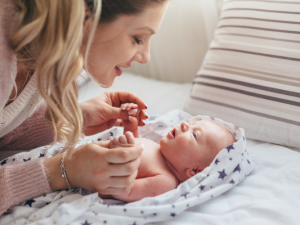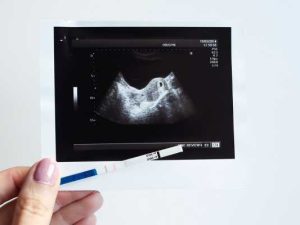How to know if I have implantation issues ?
Transcription :
Last week, I posted a video about tips to support and improve implantation, and after you’re done watching this video, you should check it out, I’m going to leave the link in the description below. But it brought up so many questions, actually, in some cases, some of the most questions I’ve ever gotten on any video. Questions like how do I know that I’m having an implantation issue? Or how do I know that my difficulties are because I’m having an implantation issue? And those are really great questions, on top of all the other amazing questions that were posted because of this video. So I decided, in this fertility TV episode, to answer those questions and allow you to dig a little bit deeper, to find out if implantation is really the main issue that’s causing you not to get pregnant. So let’s get into it.
Hi, I’m Dr. Mark Sklar, also known as the Fertility Expert, and I’ve been working with couples for over 19 years, couples from all over the world, through my online coaching programs. And if you’re lucky enough to be here in San Diego, you can visit me at one of my clinics. This channel is all about fertility and sharing information to support all of you from all over the world. I believe that many of you who are trying to become parents have been misdiagnosed or misled, you’ve been misguided, and you’ve lost your hope. This channel is about giving you information to restore your belief in yourself, restore that hope, and hopefully allow you to get pregnant as well.
A small thing that you can do to help me and to help women from all over the world is, like this video and comment. When you do that, it allows this video to be seen by more women who are trying to get pregnant, which means by watching this video, you’re helping to share the good word, to spread information and to support women from all over the world. So give me a like, and share a comment below and let me know what you think about this video.
So let’s dive in a little bit more into implantation. The first thing that we have to recognize is there’s a lot that we don’t know about implantation, but there’s also a lot that we do. So let’s talk about some of the key facts that can help us recognize if we’re having an implantation issue, and first and foremost, if we’re having implantation. So what are some symptoms or signs of implantation? Well, the first one, if you are tracking your cycles or your temperatures through basal body temperature charting, then one of the first things that you’re going to recognize or look for is a dip, post ovulation. So there’s a dip, potentially, at ovulation for most of us. But the other thing that we’re looking for is about 6, 7, 8, 9 days later, somewhere in that window, that we’re going to see another dip and then a rise. That dip signifies implantation. And that rise also helps you recognize that hopefully implantation is sticking and your temperature arising because progesterone’s going higher.
Another sign or potential sign of implantation is implantation bleeding. Now this doesn’t happen for everybody, but if you are going to have implantation bleeding or in this case, implantation spotting, because it can be more likely to be spotting versus bleeding, and that’s also going to happen post ovulation in roughly that same window of time that I just mentioned earlier. So roughly 6, 7, 8, 9 days post ovulation, when implantation is occurring, you could have some light bleeding or spotting. Now this can often be confused with a period, because you might think your period is coming or you might associate it as spotting leading up to your period. Now those are different things. First, if it’s your period, it’s going to be a full flow or the start of a full flow. This is not that. Implantation, spotting or bleeding is not that.
The other way to recognize that it’s not, is that this is coming at a different time. You should be starting your bleed for menstruation about 14 days after ovulation. This is happening sooner. It can bump up a little bit too close to menstruation, so that can make things a little bit more confusing, but typically it happens earlier. I do have a video completely devoted to this exact topic. I’m going to leave the link in the description below as well, so you can check it out after this video. Other ways that you can be thinking that you are pregnant because implantation has happened, is if you start to have some symptoms that resemble pregnancy. So that might be breast tenderness, maybe some bloating, maybe some fatigue.
Now I don’t like to use this as my guiding principle or symptomology because for so many women, you might not have any symptoms whatsoever and still be pregnant, but there are a small percentage of you that could have those symptoms and be pregnant. So I do like to mention it, but it’s not my favorite thing to focus on. I do prefer the first two as really more key signs of implantation.
So as we’re talking about implantation, we do all so have to address potential reasons why implantation might not be happening. So you do have to recognize some of those things. Some of the more common reasons would be endometriosis and you actually might not have any symptomology of endometriosis and still have it. There are also degrees or stages of endometriosis. And I have plenty of videos on that topic as well, which you can check out if you want to, but that’s just one piece. So endometriosis, adhesions, polyps, scar tissue, these are all potential variables that could hinder implantation from being successful. Another cause that actually does not get talked about very much is a tilted uterus or displaced uterus. Now let’s just say if it’s tilted backward or forward, is not so much of an issue for implantation as it is for allowing the sperm to meet the egg properly. So more for fertilization. But the piece of this that is a variable for implantation is if the uterus is retroflexed, which means that it’s folded on itself. That can make it a little bit more difficult for implantation to occur.
Another variable that is important to mention here is the thickness of the endometrium, which is the lining of the uterus. So is that lining too thin or too thick? Now it doesn’t happen very often that the lining is too thick. That would have to be an extreme case in terms of very, very thick. The lining thickness that we do like to see as a normal thickness is as thin as seven, but we preferably want to see between eight and 12 millimeters. That’s a nice size of thickness. And that it’s trilaminar, so it’s got those three layers in the endometrium. That’s what makes it a receptive and healthy endometrium for implantation. Now, if it’s too thin, that can absolutely make it difficult, and more difficult for implantation to occur. Now you’re not going to know if this is a variable, unless you have somebody measuring, and measuring regularly, your endometrium so that you can get an understanding and baseline for what that looks like for you.
This next reason I did discuss a little bit in the previous video, which is antibodies, which means you’re having an immune issue. I did talk about that in the previous videos actually. One of the first things I discussed is if your immune system is not functioning properly and you have elevated antibodies, this can make it more difficult for implantation to occur. Another variable is inflammation or infection. So if you have an increased inflammatory response in the endometrium, it will make it more difficult for implantation to occur. And if you have some sort of infection, a lot of these infections, you might not even know, they can be what’s called hidden infections. So you do need to do some more extensive testing to evaluate that and determine if that’s an issue.
Now, some of the names for some of these tests would be, you want to do a hysteroscopy to look in and see what’s going on in the uterus. Maybe they might find polyps or scar tissue or adhesions. You can also do for those infections. You can do what’s called an ALICE or an EMMA test or a ReceptivaDx, which also tests for different infections, but especially endometriosis. These are all things that either your OB GYN, but more practically, probably your reproductive endocrinologist or fertility doctor would be doing for you.
There are potentially some other reasons why you might not be having implantation or that could be affecting implantation, but the ones that I just mentioned are the bigger ones, the ones that are more common. So right now what I want to talk about is some of the myths associated with implantation. Before I do that, I do want to invite you all to comment below and let me know which one of these points that I just mentioned having to do with causes that might be hindering implantation, are new to you or are interesting to you. Let me know by commenting below.
Now let’s get into some of these myths having to do with implantation. The first one is bedrest. Now bedrest is one of the key things that is often discussed in association with in vitro fertilization or IVF. So you were to have your IVF transfer, where they put the embryo back in and then you’d be sent home to rest. Now, often this is brought up by saying, okay, you need to do bedrest for two to three days. Now there is no real evidence, no research studies, that actually show that bedrest is beneficial or that it improves implantation. Actually in many countries, you will go in for your IVF transfer and then you go right back to work, which shows you that bedrest is really not necessary. And for many of the clinics in the United States who used to do bedrest and no longer do bedrest, they haven’t seen a change in any of their statistics.
So if your clinic is still recommending that you do bedrest, a lot of that is done out of superstition and habit and they just don’t want to break it. But the reality is you shouldn’t be laying in your bed right after you have a transfer. We want a little bit of movement because we want the blood circulating to help improve implantation. So in many ways, bedrest is contrary to what you really should be doing. Now that doesn’t mean you should be going out and running a marathon either. So you come home from a transfer, take it easy, sit on the couch, watch a movie, whatever it might be, but it doesn’t mean you have to be in bed. We’re just going to take it easy and just rest. But you can get up, go to the restroom, you can get something from the kitchen if you want, but probably no long periods of time standing or cooking on your feet at that moment in time.
And then with every day after the transfer, you can slowly add in more activities, do a little bit more, maybe go for a nice walk around the neighborhood, that’s flat and even, and easy. So bedrest is not necessary, but we do want to take it easy and relaxing. Another thing that falls into this myth category is exercise. I just started to talk about it right in my last point, but we don’t want to be doing a lot of exercise and you shouldn’t be doing no exercise. We just talked about blood circulation. So I do want you to go for a nice walk, maybe 30 minutes, flat, easy, non strenuous, but you are moving. That is beneficial for implantation.
And then the third point is supplements. What can I take in my luteal phase to help with implantation? The reality is that there’s really nothing that you can take that’s going to do that at that moment in time. We want to be dealing with all of this in advance. This is not the time to add new supplements or take new things. This is the time to be enjoying your two-week wait, is just taking it easy and riding along, coasting along. If there’s any supplements that you should be taking or need to be taking, all of that should already be done. We want to that in your system and supporting you at that moment in time. So there’s no new supplements that you should be taking, but you do want to consult with your healthcare providers and your team of providers to figure out what it is that you should be taking in advance, to help promote you and support implantation throughout. So those are all the big points having to deal with implantation.
Now, if you’ve been trying for a little too long, or a little too long for you, and you want more support or you want my help on figuring out any implantation issues or really what the root cause is, then I want to invite you to apply to join me in my Hope fertility coaching program. All you have to do is fill out a form and use the link in the option below to do that so we can find out if you qualify and if we can support you on your fertility journey.
Like I always ask you all to do, if you like this video for sure, give me a thumbs up. And again, if you have comments, questions, or feedback on this video, then comment below and let me know. Did you find this interesting, did you find it helpful? Leave a comment and let me know. And remember, by leaving a comment, you help this video be seen by more women and couples from all over the world, which means you’re helping them too. A little quick reminder as well. If you’re not already a subscriber to my YouTube channel, then make sure you hit that bell to subscribe and get notified when I put out a new video for all of you.
And until the next video, stay fertile.




